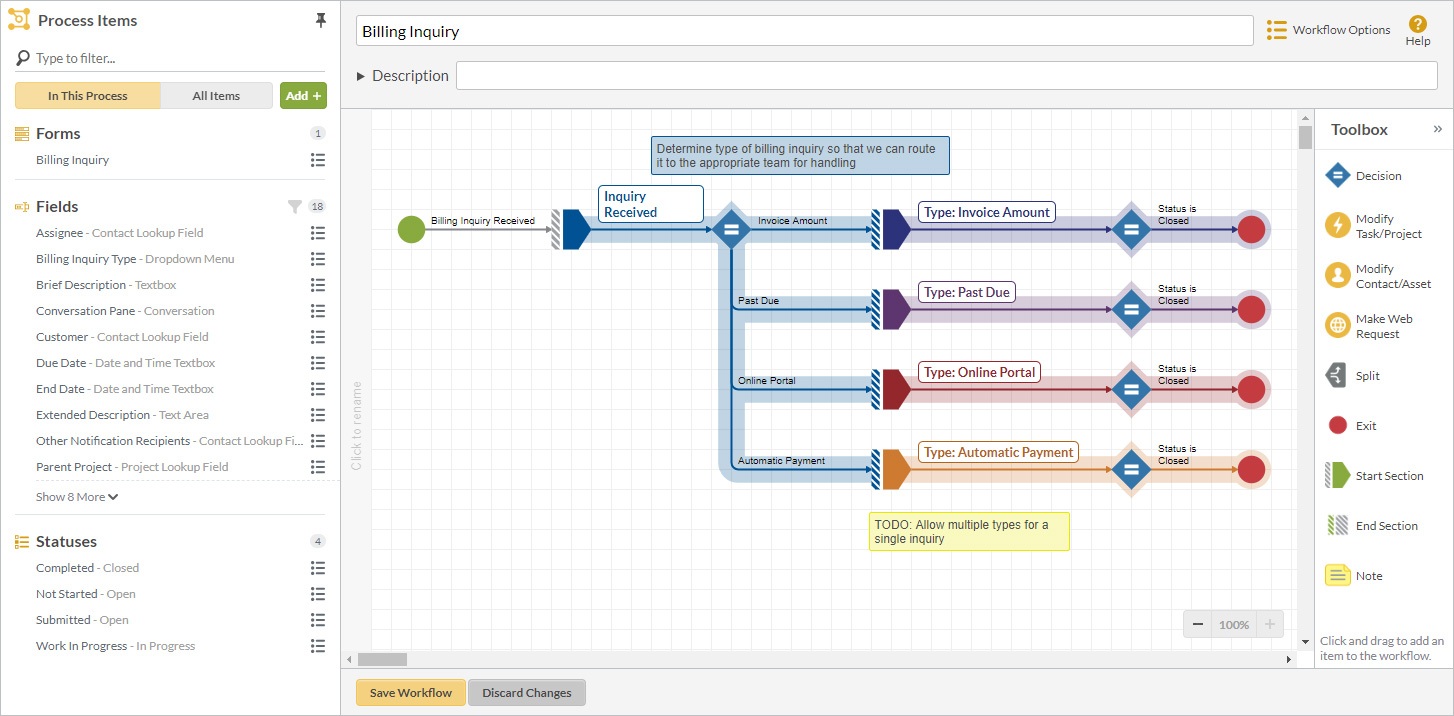Lean BPM has evolved from the development and implementation of a BPMS which could be deployed quickly, adopted and used by the business user themselves (the Citizen Developer) and which would allow for fast, reactive and proactive changes to business processes.
There has been much discussion around low-code and no-code BPM alternatives to traditional BPM solutions, however, little focus has been placed on the practical implementation of efficient and effective BPM solutions into both manufacturing and transactional operational environments.
Lean BPM has 5 core components, and we’ll go through each of them here.
Lean BPM requires:
1. Deployment of BPM functionality quickly, at low cost, and with minimal or zero developer involvement.
Lean BPM seeks to eliminate waste created by BPM deployments which soak up developer time and resources, typically placing stress on overburdened IT departments, and/or requiring the third-party involvement of expensive partners.
This applies both to the deployment of the solution and also to supporting it.

Lean BPM also seeks to eliminate the waste associated with the time taken to deploy a BPM solution.There are therefore four sub-components to the elimination of waste by deploying a Lean BPM solution:
- Low initial cost of ownership;
- Low lifetime support costs;
- Low or no requirement for internal or external specialists to deploy or support the solution; and
- Speed of deployment reduces time spent on deployment and cuts the delay in reaching Return on Investment (ROI).
2. Delivers a pragmatic toolkit to discover, implement, and continuously improve business processes.
Lean BPM delivers the tools which Citizen Developers actually need, and can use themselves, to manage and improve business processes.
Lean BPM solutions provide the means for the Citizen Developer to map existing (As-Is) and proposed (To-Be) business processes and replicate them directly within the solution.
In addition, Lean BPM will provide a range of tools such as:
- Task management
- Visual workflow
- Resource utilization
- Contact management
- Asset management(including Digital Asset Management)
- Compliance management and audit trail
- Employee collaboration tools, e.g. integrated calendars, email capture, annotated notes and addendums, etc.
- Reporting tools
- Globalization
3. Provides integrated tools which are fully customizable and configurable by the Citizen Developer (i.e. the business user).
It is important to understand that:
a. All of these tools are customizable and configurable to how the business needs to use them; and
b. All of these tools are capable of being used by the Citizen Developer who has no specialist coding or development experience, e.g. the business analyst, the team supervisor, operations manager, compliance officer, HR manager, etc.
4. Provides BPM functionality that is instantly responsive to the business’ need to respond and react to the changing business environment.
A Lean BPM solution must be able to respond to changes very rapidly, in order to take advantage of opportunities, and avoid threats, in the changing business environment.
This means that the lag time between identifying process improvement and making the required change, must be minimalized, if not completely eliminated. This is not only in conformity with the underlying principles of Lean itself, i.e. the elimination of waste, but also opens the door to achieving Continuous Improvement and true process management agility.
5. Lean BPM adapts to the business, rather than the business adapting to the tool.
We have touched upon the how Lean BPM must be customizable and configurable to how the business needs to use it. This is to avoid the shoe-horning effect whereby a business must adapt its processes to the BPM solution, rather than the BPM solution molding to how the business processes are already established.
Lean BPM requires the solution to be fully malleable and flexible, so the solution acts like ‘process glue,’ binding the organization together, but now in a way which provides visibility into them.
Summary
Lean BPM has 5 major components:
- Deployment of BPM functionality quickly, at low cost, and with minimal or zero developer involvement.
- Delivers a pragmatic toolkit to discover, implement, and continuously improve business processes.
- Provides integrated tools which are fully customizable and configurable by the Citizen Developer (i.e. the business user).
- Provides BPM functionality that is instantly responsive to the business’ need to respond and react to the changing business environment.
- Lean BPM adapts to the business, rather than the business adapting to the tool.
